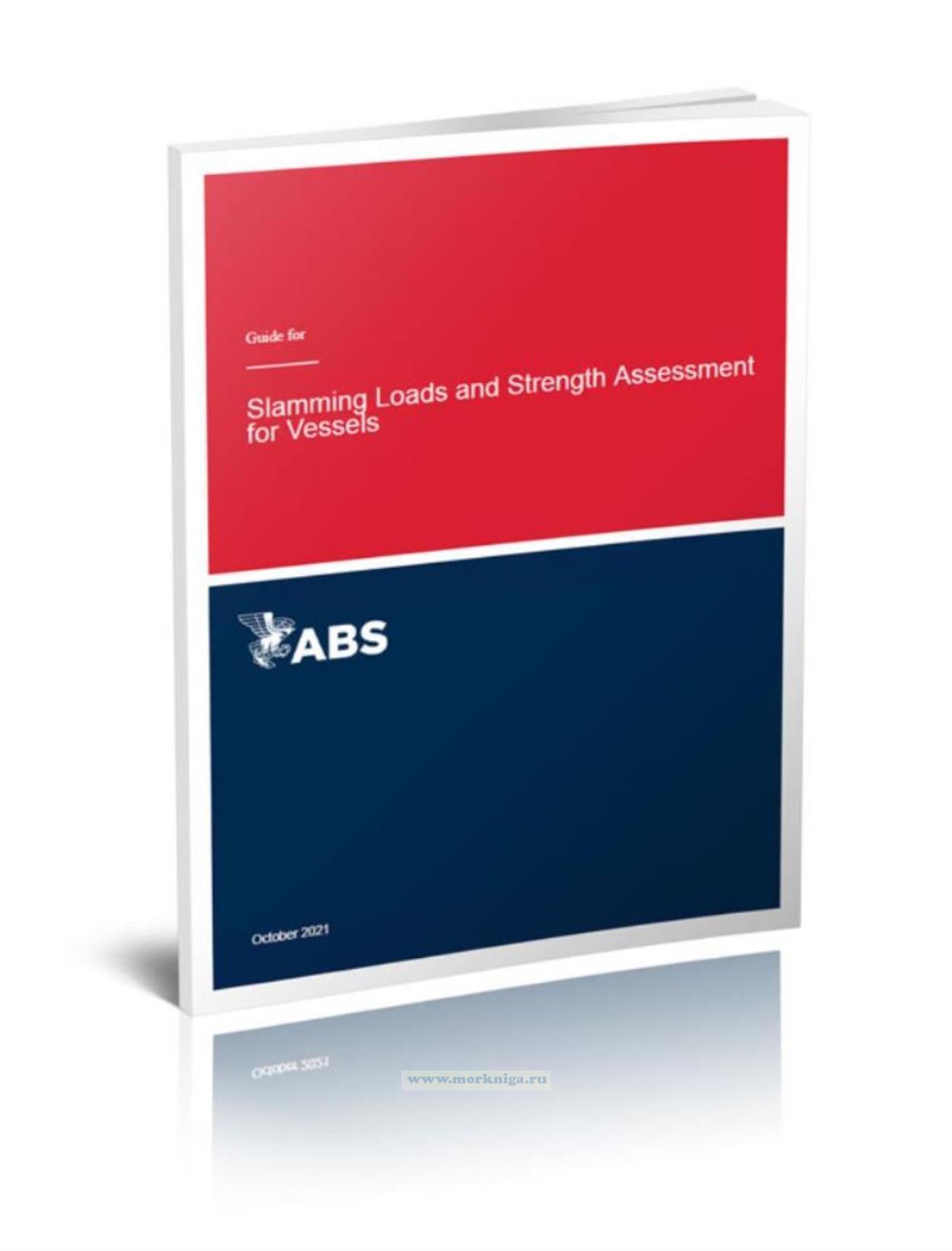Guide for Slamming Loads and Strength Assessment for Vessels/Руководство по ударным нагрузкам и оценке прочности для судов
Книга на английском языке
This Guide describes a slamming strength assessment procedure for vessels. Typically, there are threetypes of slamming loads on commercial vessels: bottom slamming, bowflare slamming, and sternslamming depending upon the hull geometry at the bow and stern. Upon verifying compliance with therequirements in this Guide, optional notations may be assigned to a vessel.A fundamental requirement of this Guide is that the scantlings of the hull structure are to be in accordancewith the criteria as specified in the ABS Rules for Building and Classing Marine Vessels (Marine VesselRules). The results of this Guide are not to be used to reduce the basic scantlings obtained from theapplication of the Marine Vessel Rules. That is, if the results from this Guide indicate the need to increaseany basic scantlings, the increased scantlings are to be implemented above the rule requirements.
Contents
Section 1 Introduction
1 General
3 Slamming Phenomenon
5 Application of Guide
7 Slamming Strength Assessment Procedure
9 Optional Class Notations
11 Nomenclature
Table 1 Optional Class Notations
Figure 1 Slamming Strength Assessment Procedure (For Each Loading Condition)
Section 2 Loading Conditions, Speeds, and Headings
1 General
3 Critical Loading Conditions for Slamming Load Prediction
3.1 Bottom Slamming
3.3 Bowflare Slamming
3.5 Stern Slamming
5 Standard Speed Profile
7 Wave Heading
Table 1 Standard Speed Profile for Slamming Load Prediction
Section 3 Extent of Hull Structure to be Evaluated
1 General
3 Bottom Slamming
5 Bowflare Slamming
7 Stern Slamming
Figure 1 Extent of Hull Structure for Slamming Load Prediction
Figure 2 Typical Frame Stations and Panel Locations for
Bowflare and Stern Slamming Load Prediction
Section 4 Wave Environments
1 Wave Scatter Diagram
3 Wave Spectrum
Table 1 IACS Recommendation 34 Wave Scatter Diagram for North Atlantic
Section 5 Vessel Motions
1 General
3 Response Amplitude Operator
3.1 Seakeeping Model Development
3.3 Roll Damping
Figure 1 Panel Arrangement for Seakeeping Analysis
Section 6 Motion Statistics
1 General
3 Short-Term Approach
3.1 Sea States
3.3 Spectral Moment of Response
3.5 Short Term Extreme Values
3.7 Lifetime Maximum Extreme Values
5 Long-Term Approach
Table 1 Sea States Derived from IACS Rec. 34 Wave Scatter Diagram
Figure 1 1-, 25-, 40-Year Return Sea States from IACS
Recommendation 34 Wave Scatter Diagr
Section 7 Slamming Pressure
1 General
3 2D Slamming Approach
3.1 General
3.3 Slamming Pressure Coefficient
3.5 Three-dimensional Effects
3.7 Dynamic Effects
3.9 Design Slamming Pressur
5 3D Slamming Approach
Figure 1 Typical Pressure Time History in Bowflare Slamm
Figure 2 Typical Pressure Time History in Stern and Bottom Slamming
Section 8 Direct Strength Assessment
1 General
1.1 Corrosion Margins
1.3 Simultaneous Load Factors
3 Shell Plating
3.1 Bowflare Slamming (1 July 2013)
3.3 Bottom and Stern Slamming
5 Shell Longitudinals and Stiffeners
5.1 Bowflare Slamming
5.3 Bottom and Stern Slamming (1 July 2013)
7 Slot Connections (1 October 2015)
9 Main Supporting Members
9.1 Structural Modeling
9.3 Boundary Constraints
9.5 Slamming Pressure on FE Model
9.7 Acceptance Criteria - Yielding
9.9 Acceptance Criteria - Buckling
Table 1 Nominal Design Corrosion Values for Direct Strength Assessment
Table 2 Simultaneous Load Factors for Finite Element Analysis of Main Supporting Members
Table 3 Allowable Stresses (kgf/cm2) for Various Finite Element Mesh Sizes
Table 4 Buckling Coefficient Ki
Figure 1 Stiffener Geometry (1 July 2013)
Figure 2 Cut-outs (Slots) For Longitudinal
Figure 3 Boundary Constraints for Forebody Finite Element Model
Figure 4 Forebody Slamming Pressure Mapped on Finite Element Model
Figure 5 Aftbody Slamming Pressure Mapped on Finite Element Model
Appendix 1 Documentation of Strength Assessment for Classification
Review

